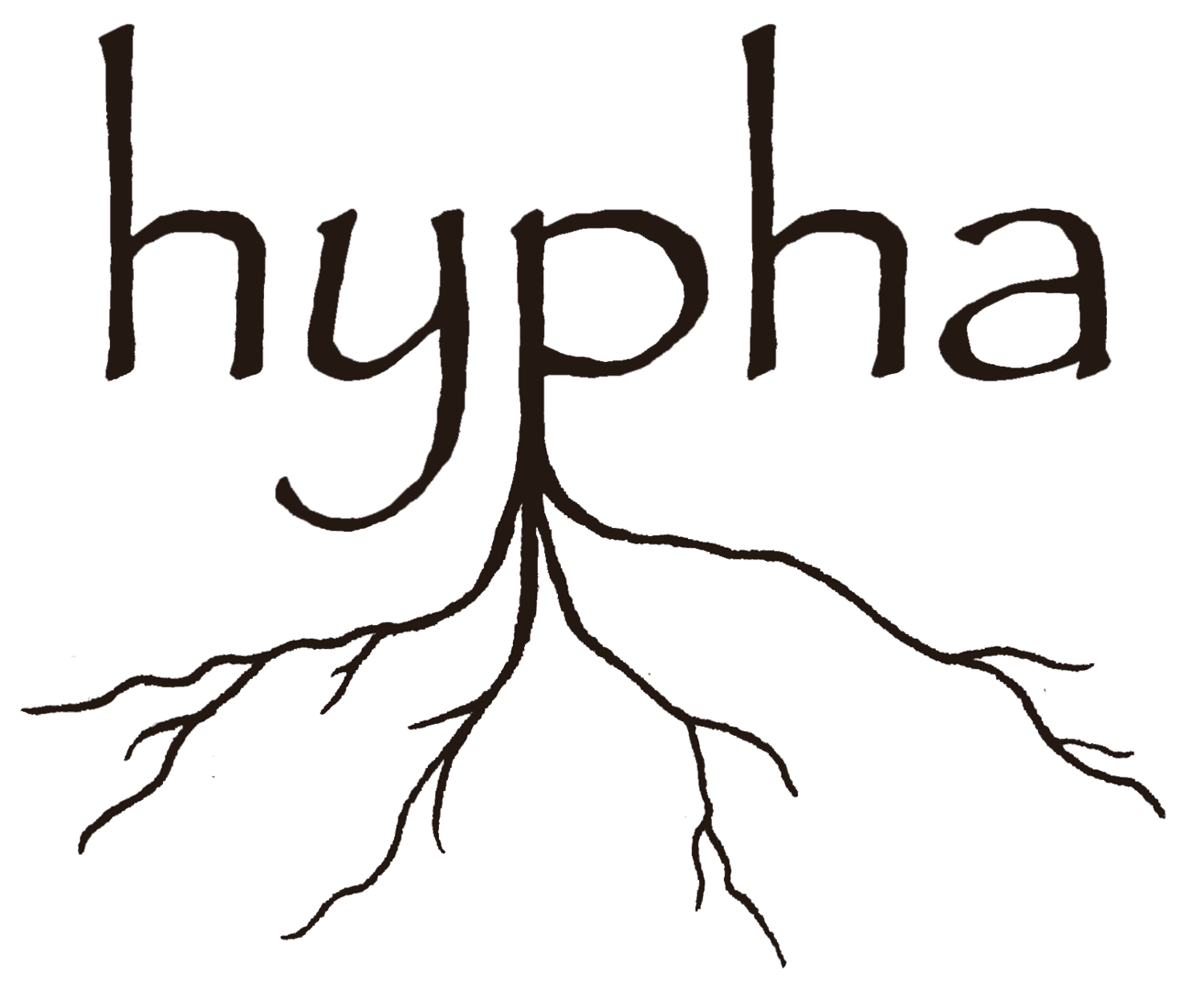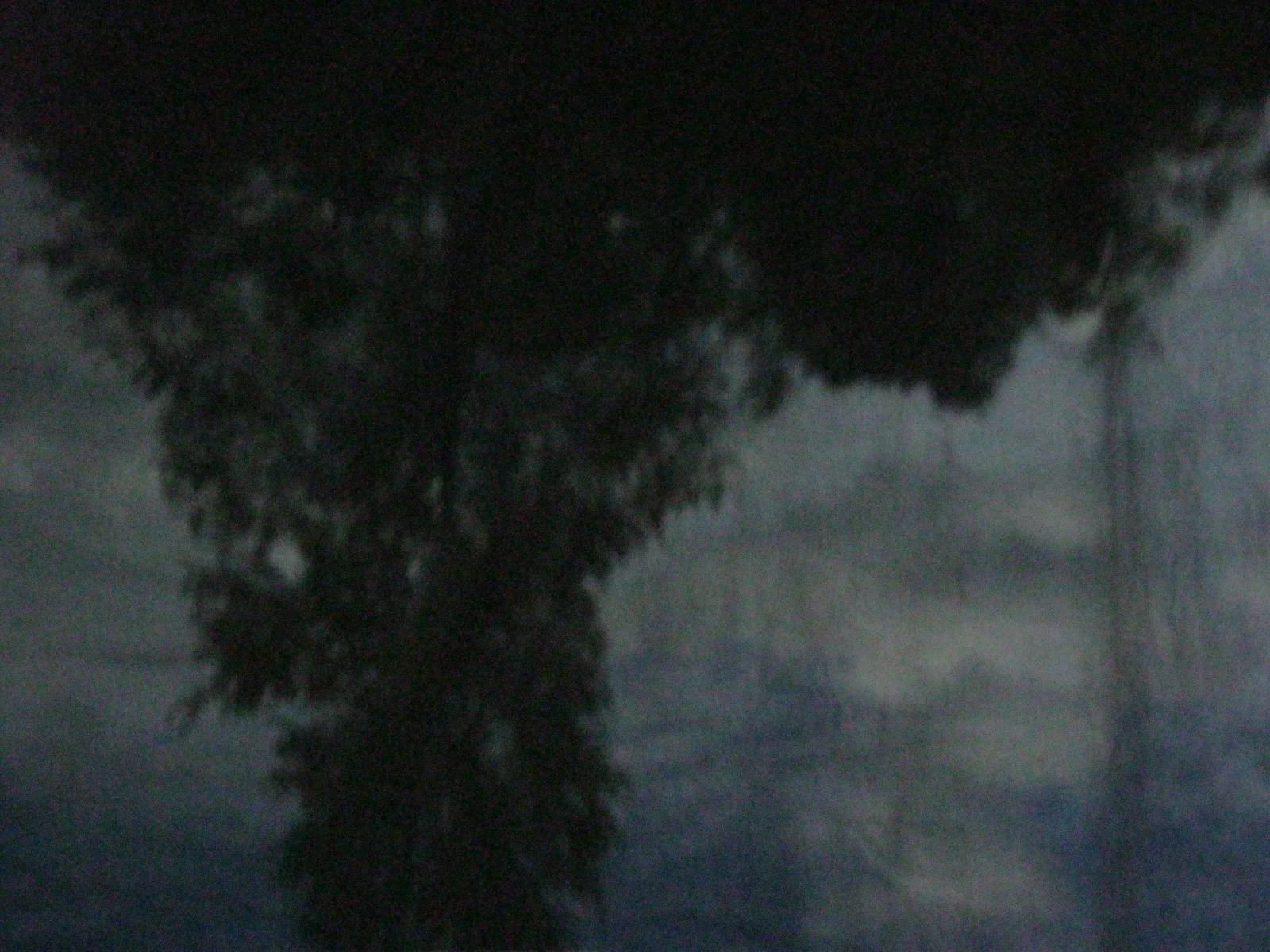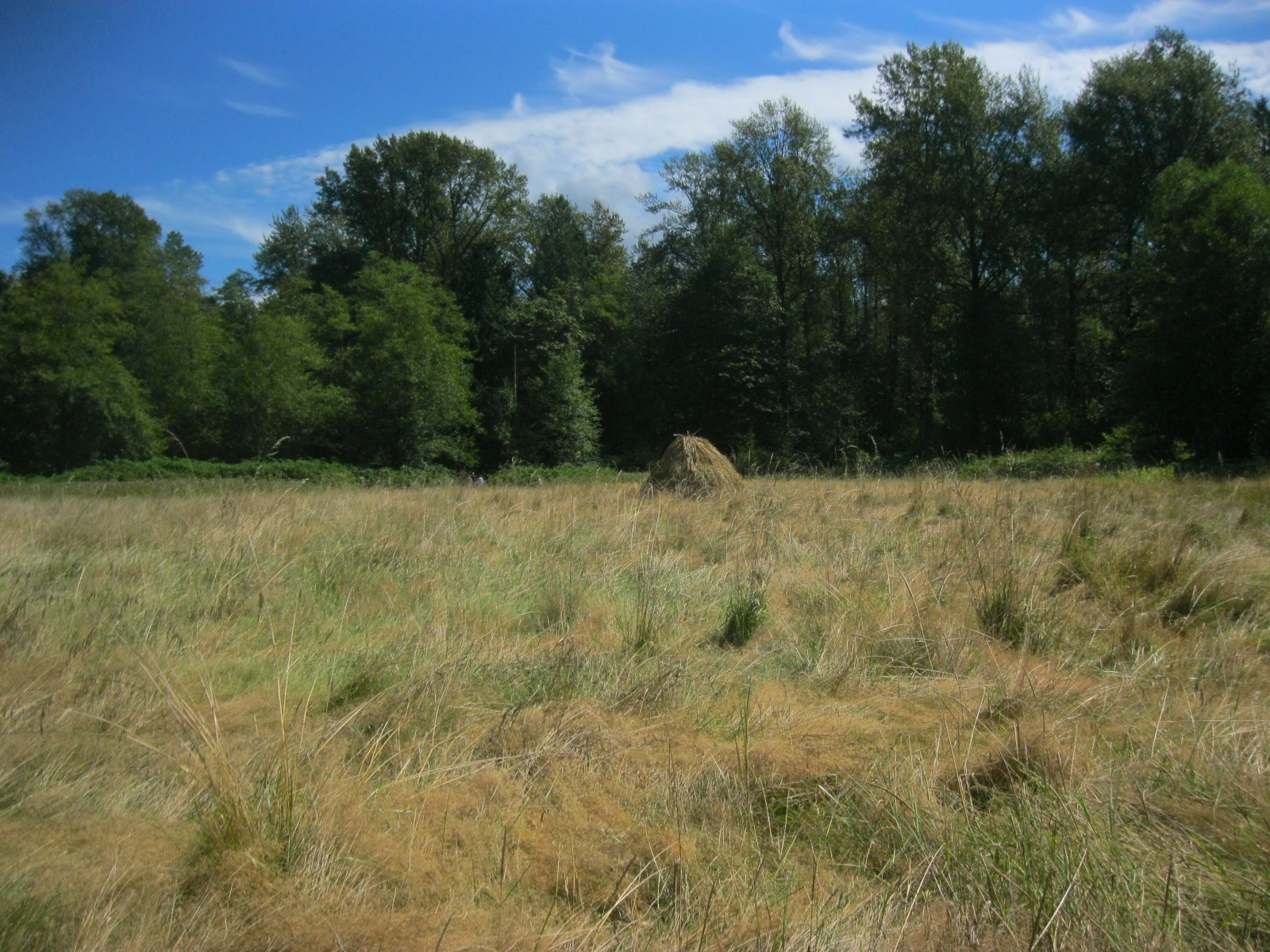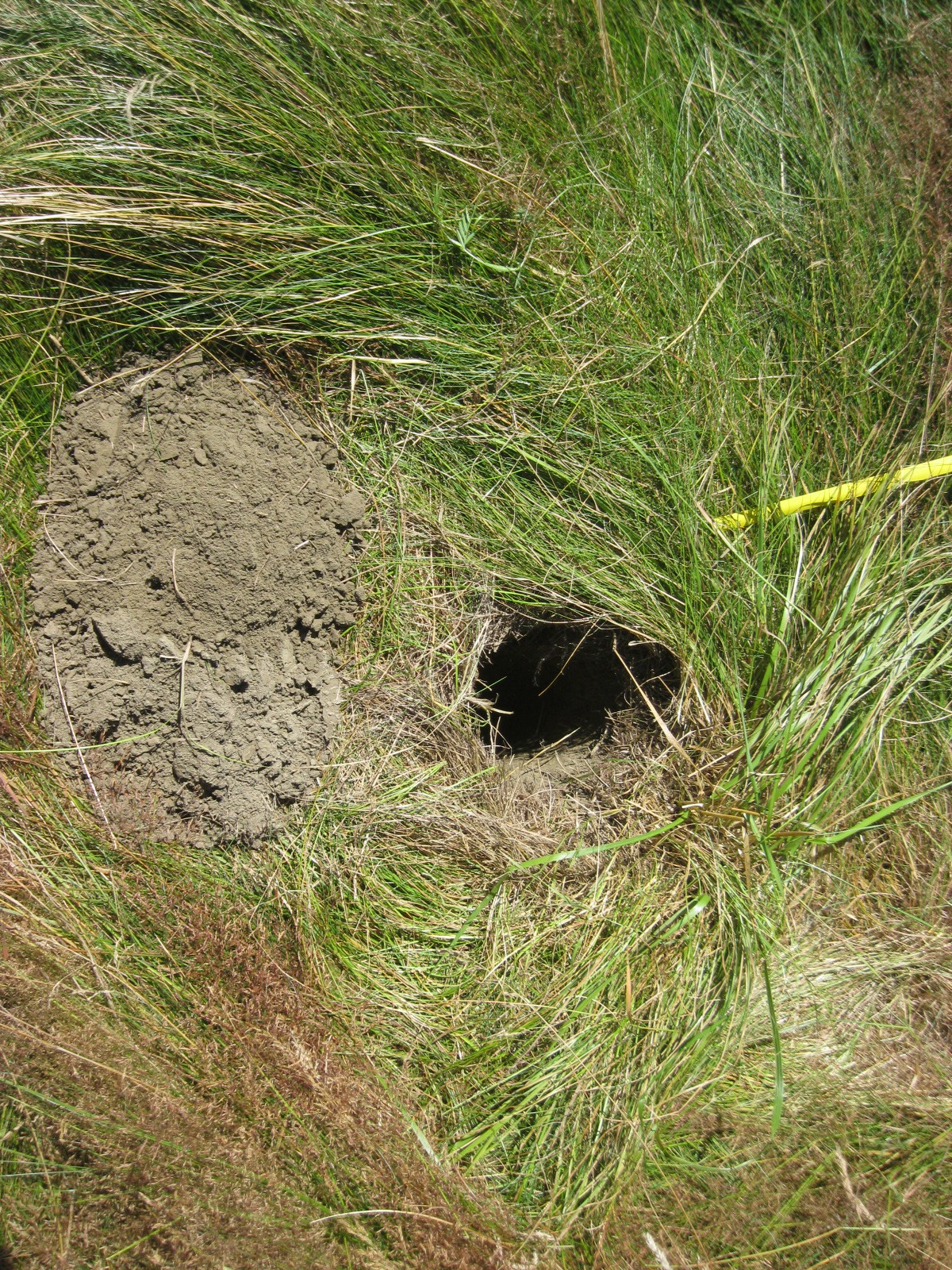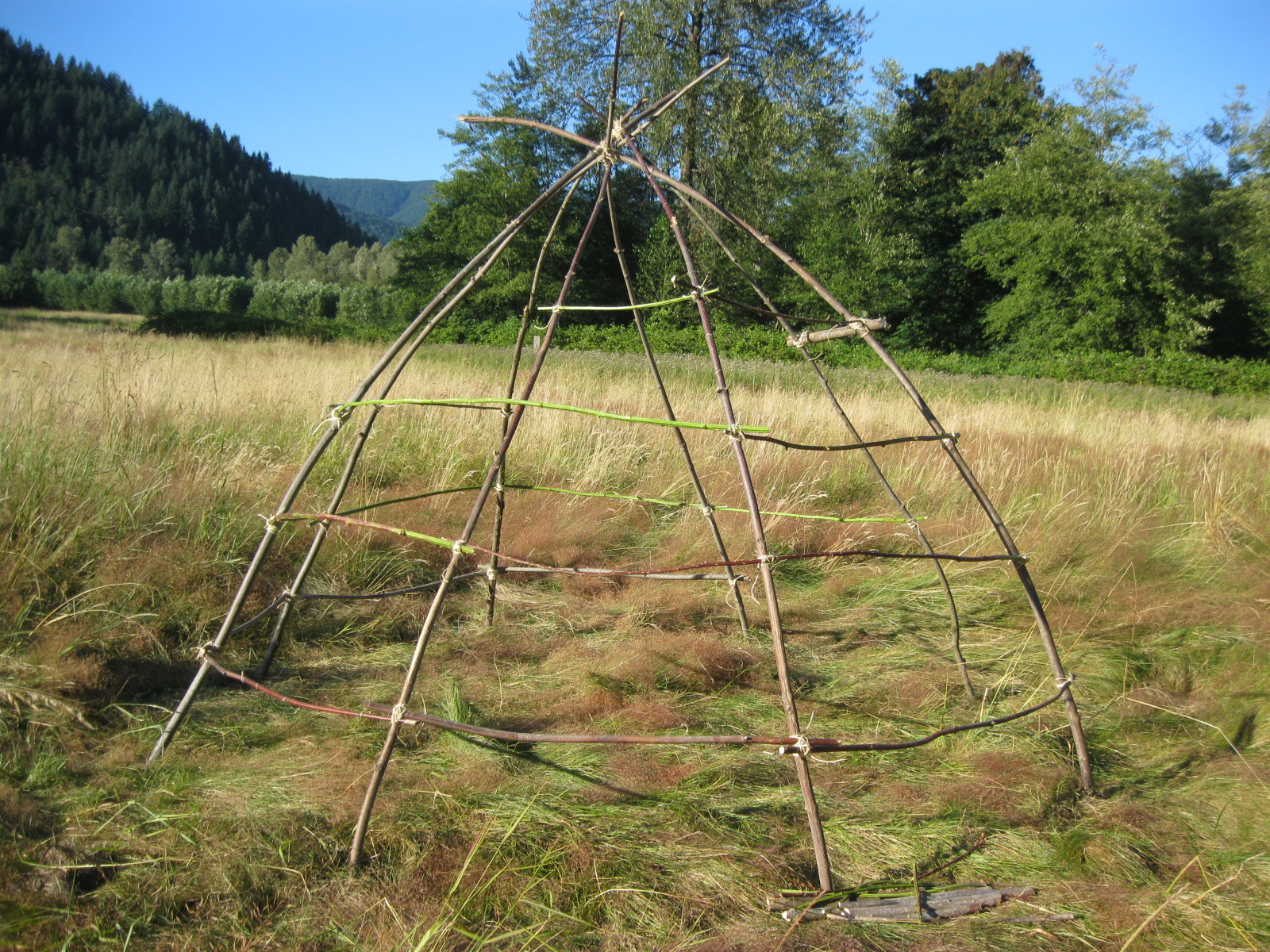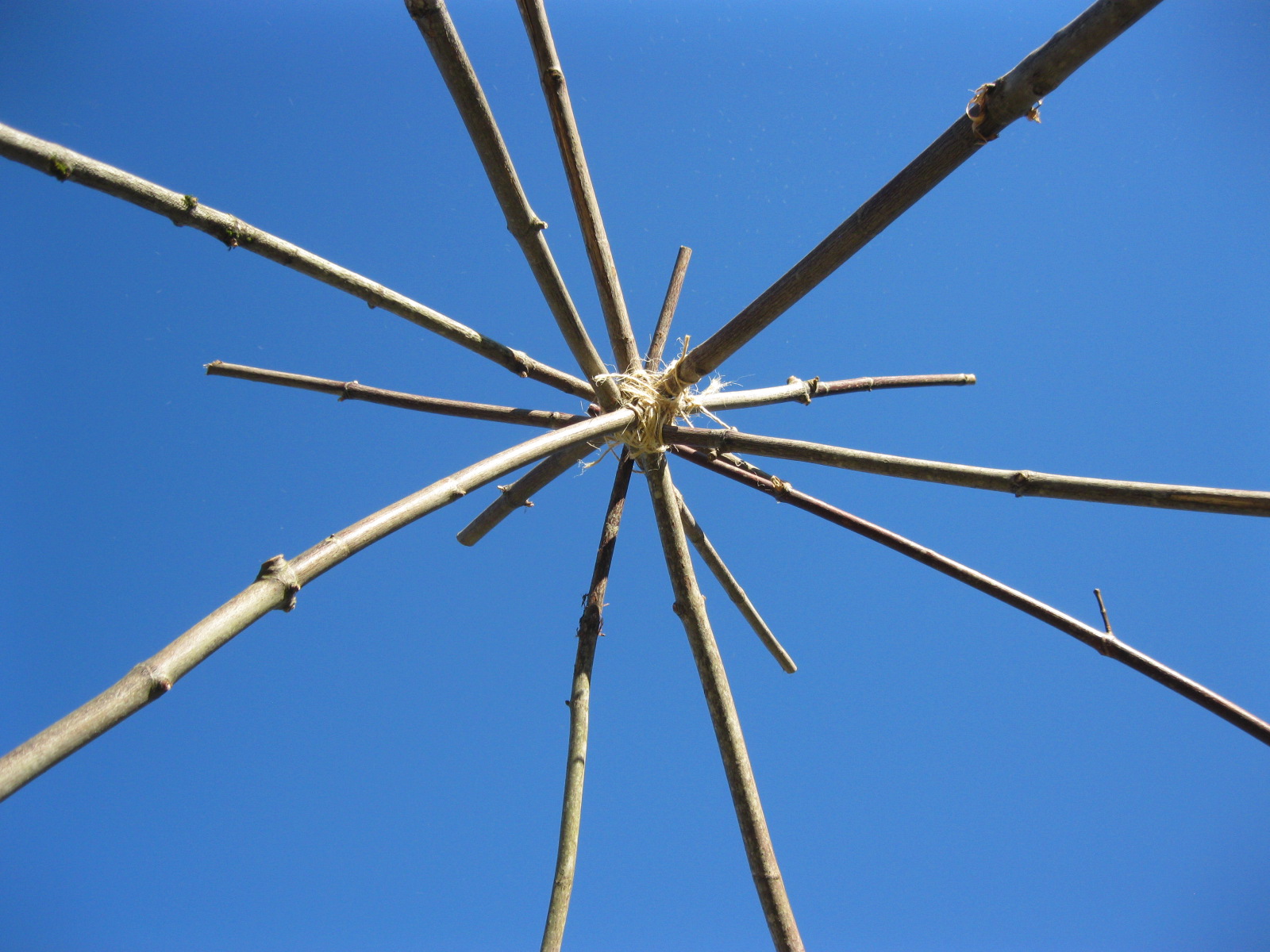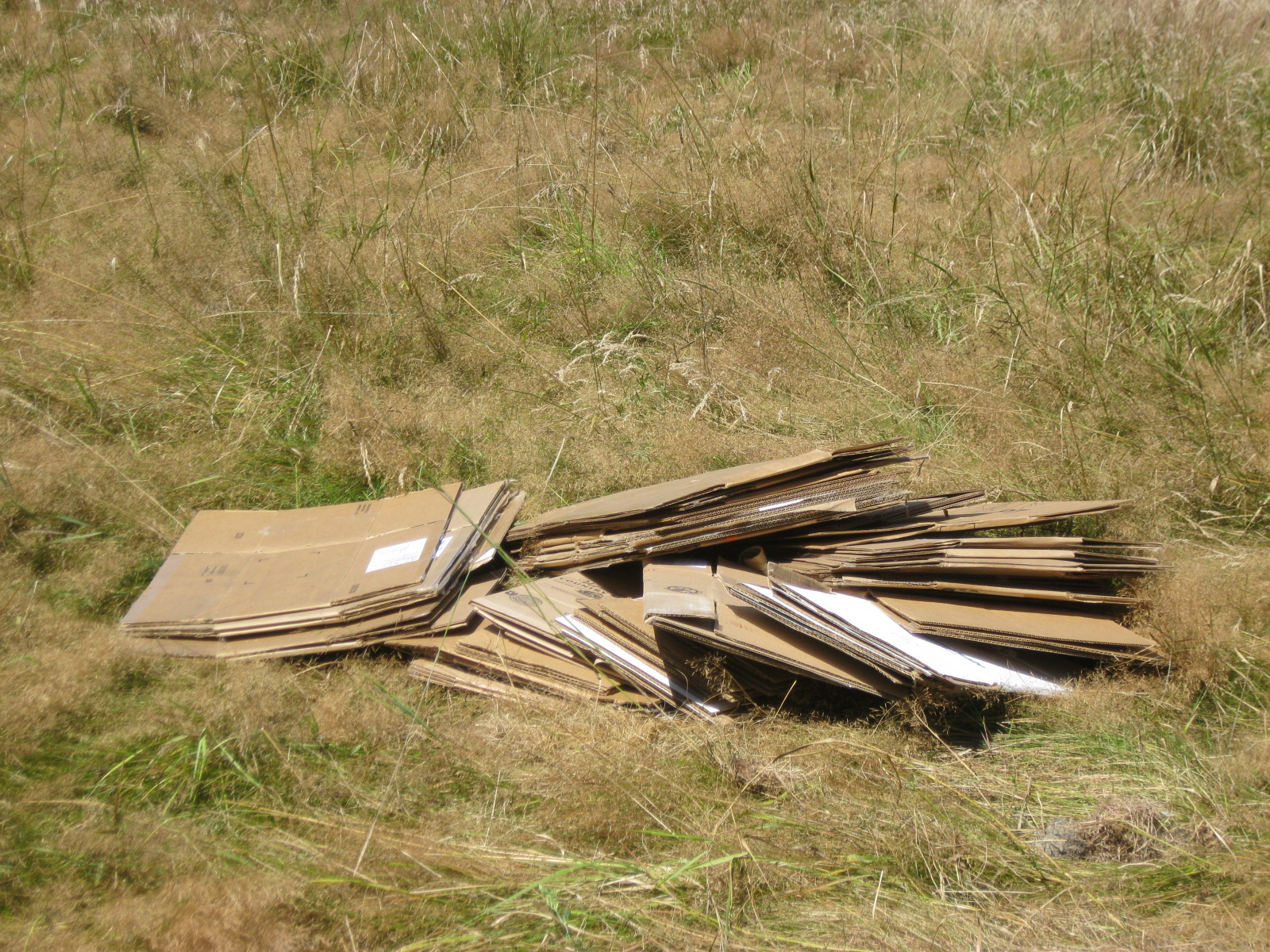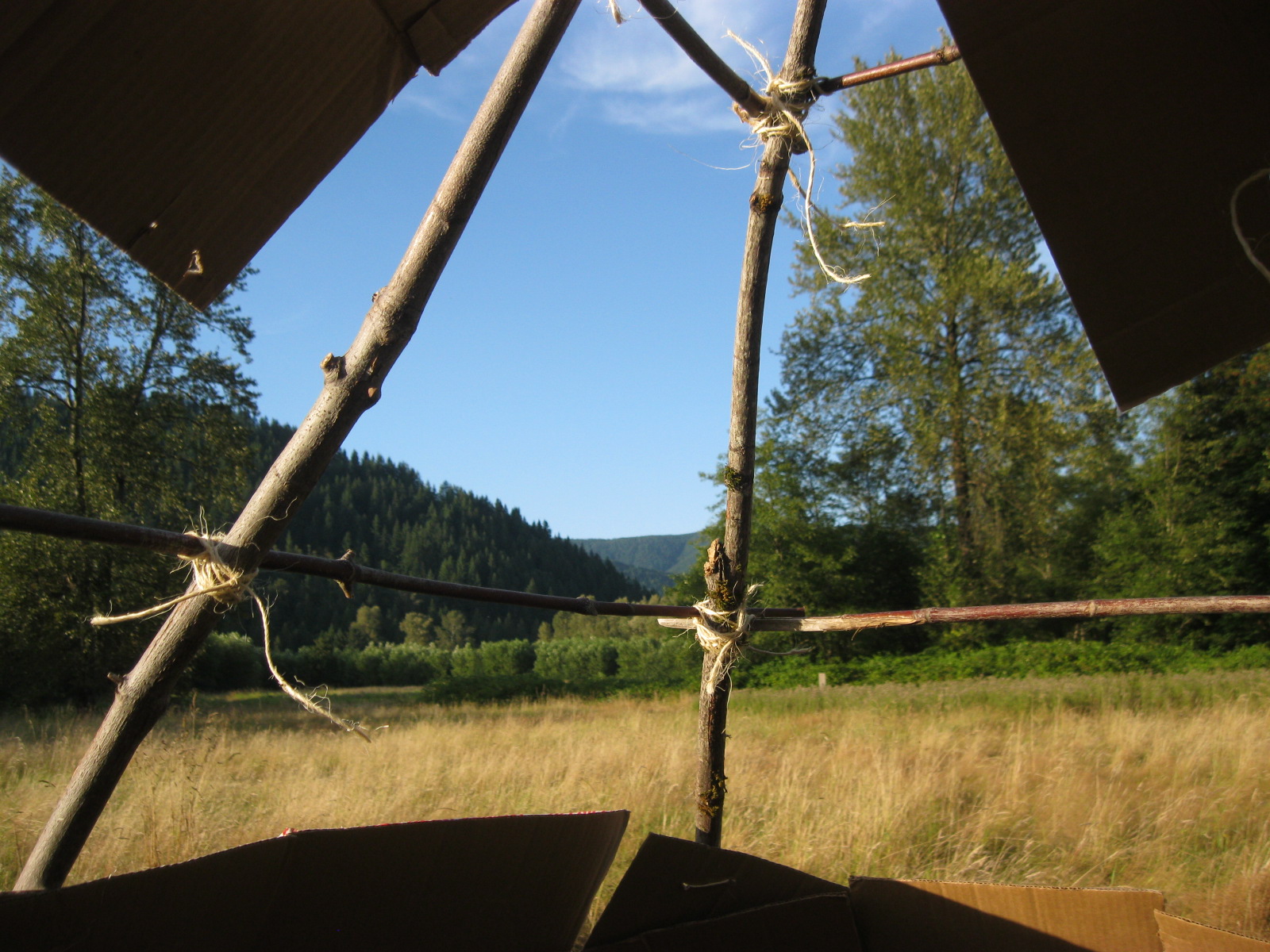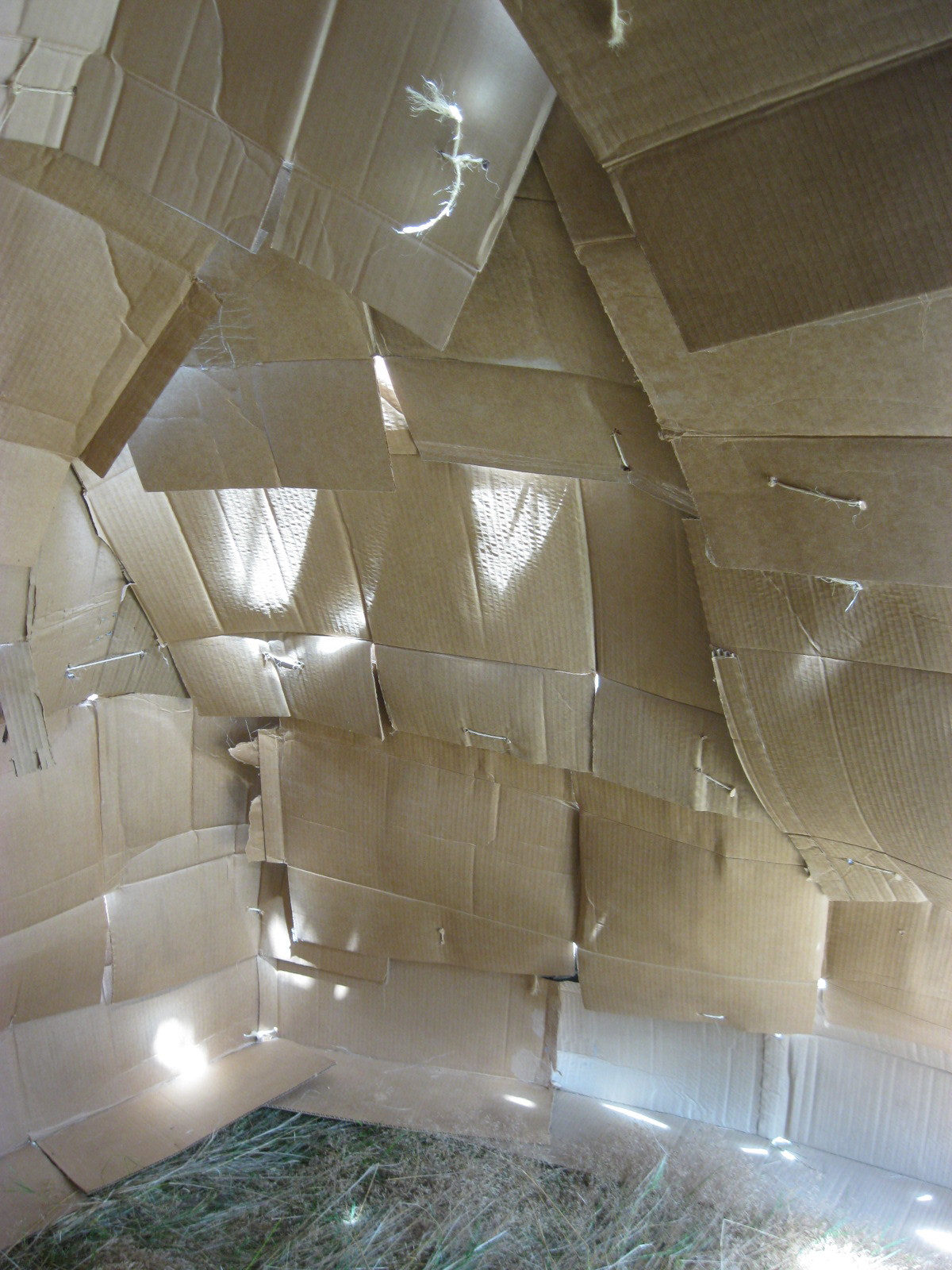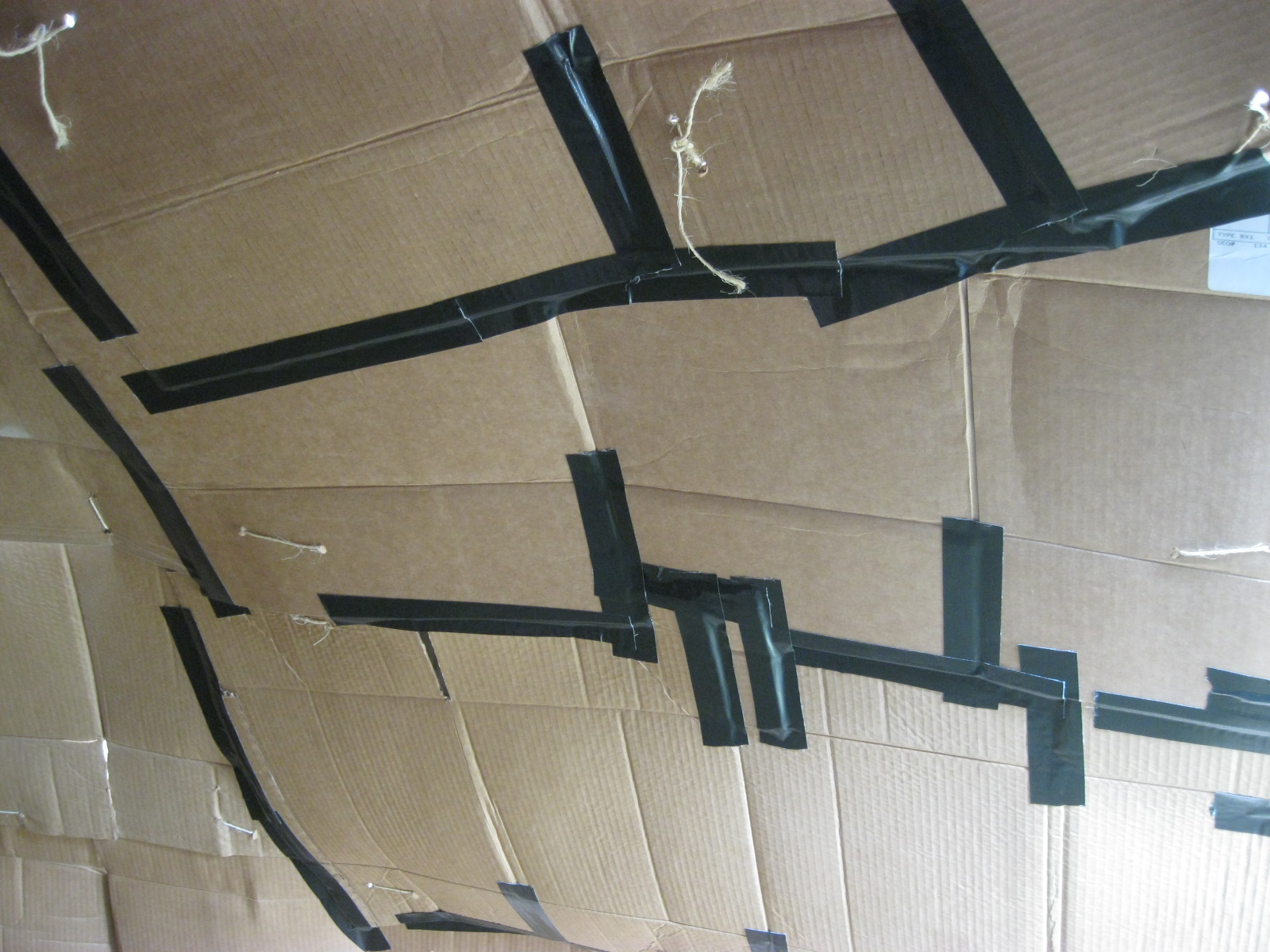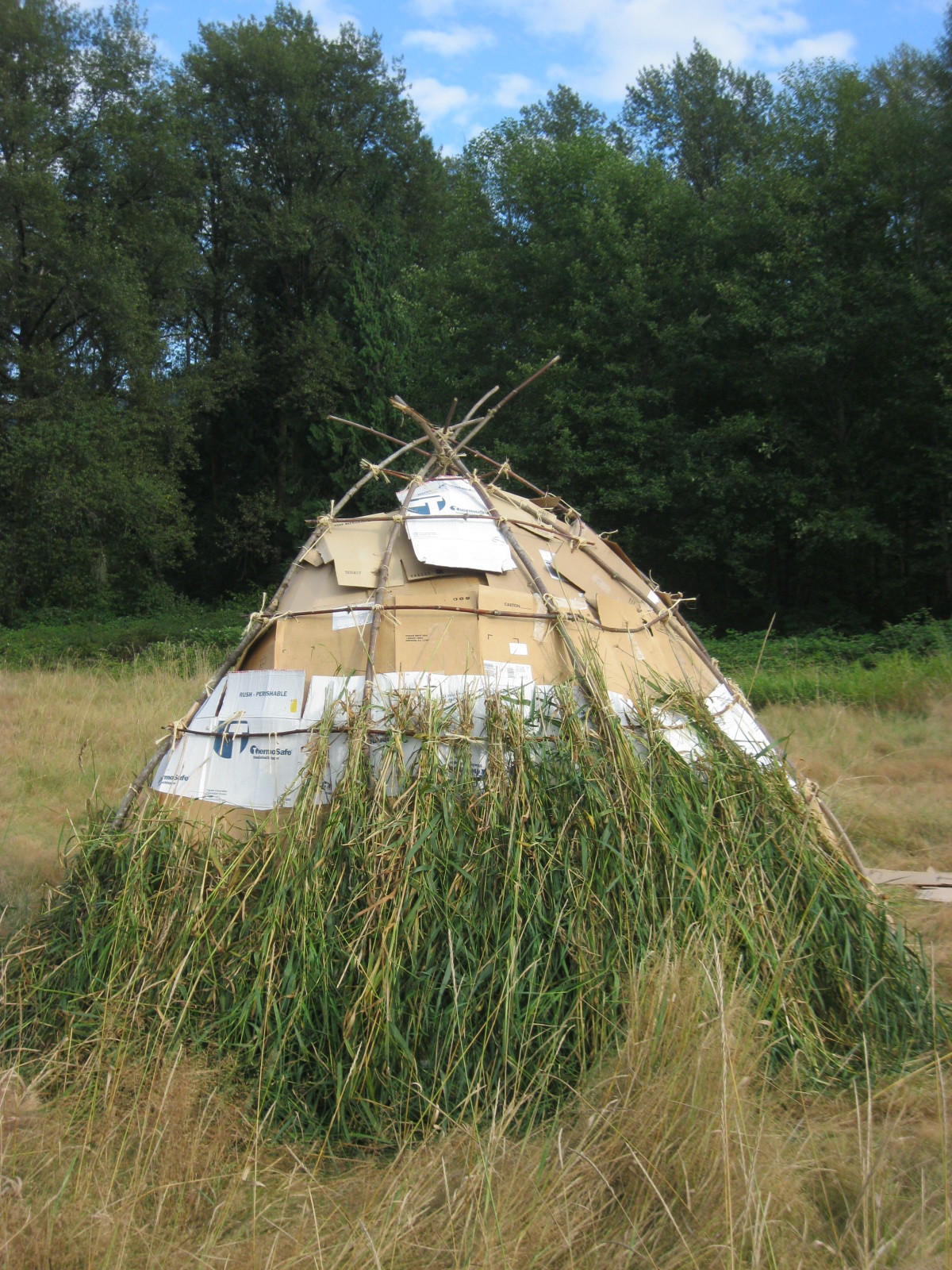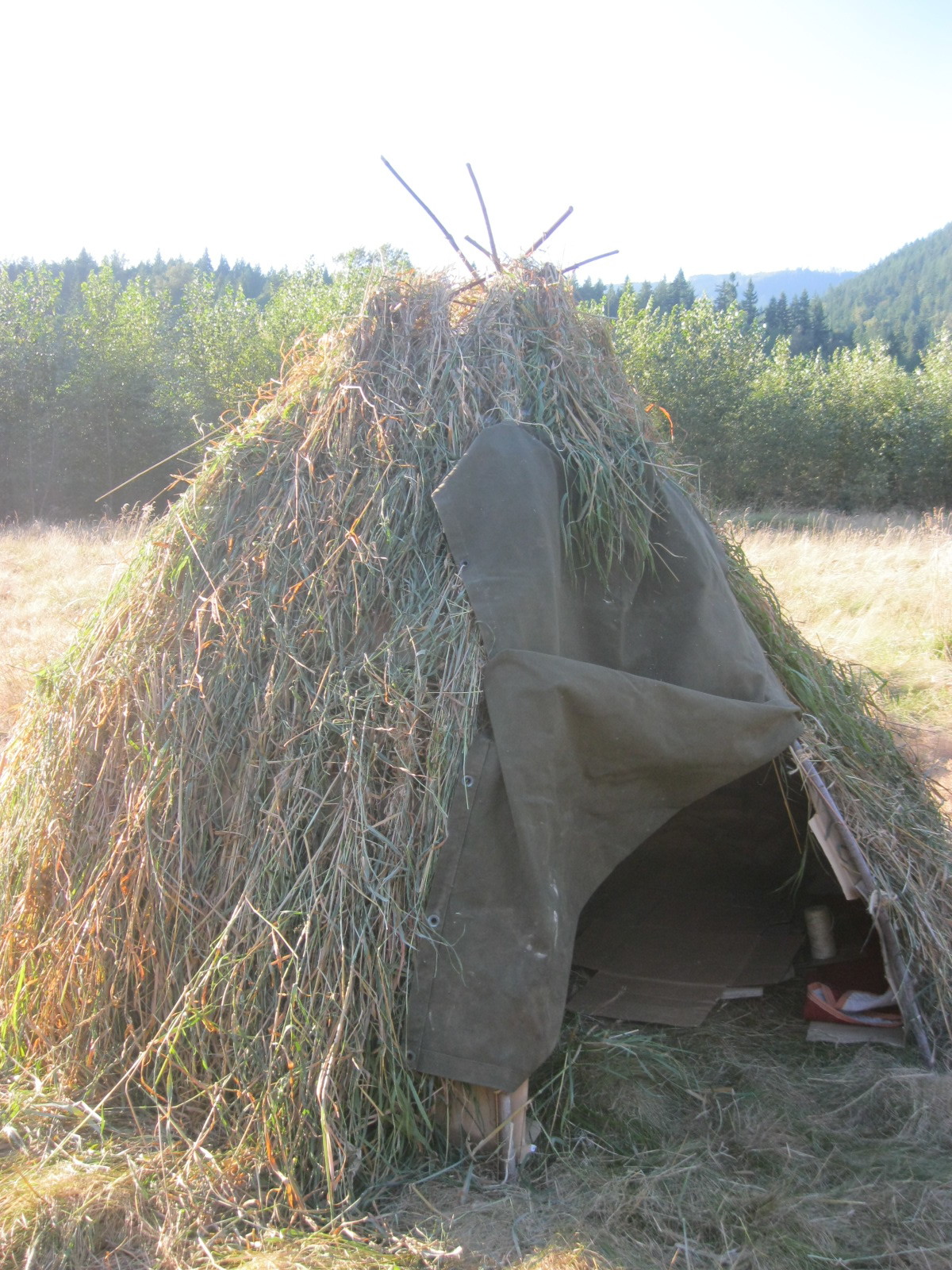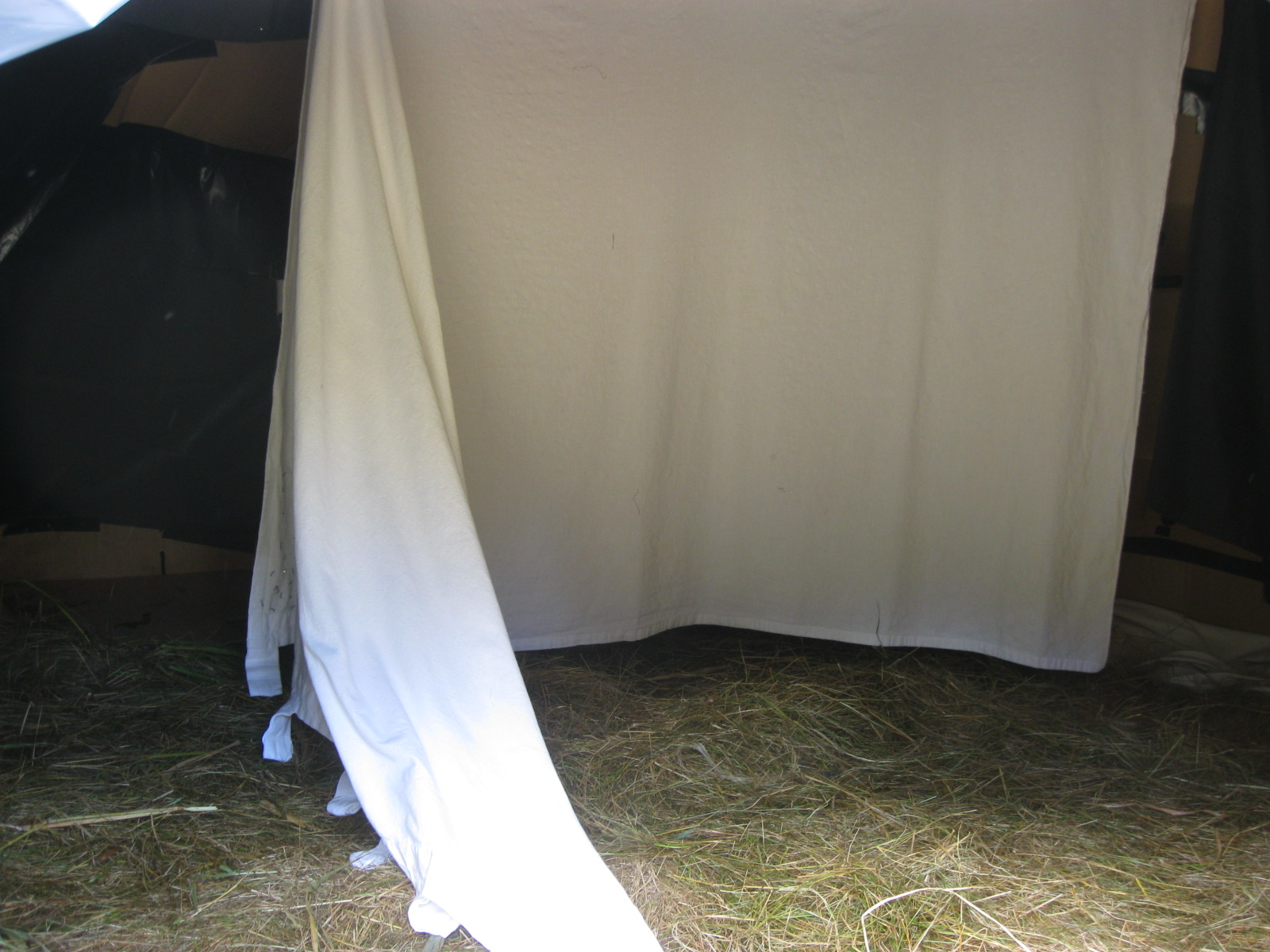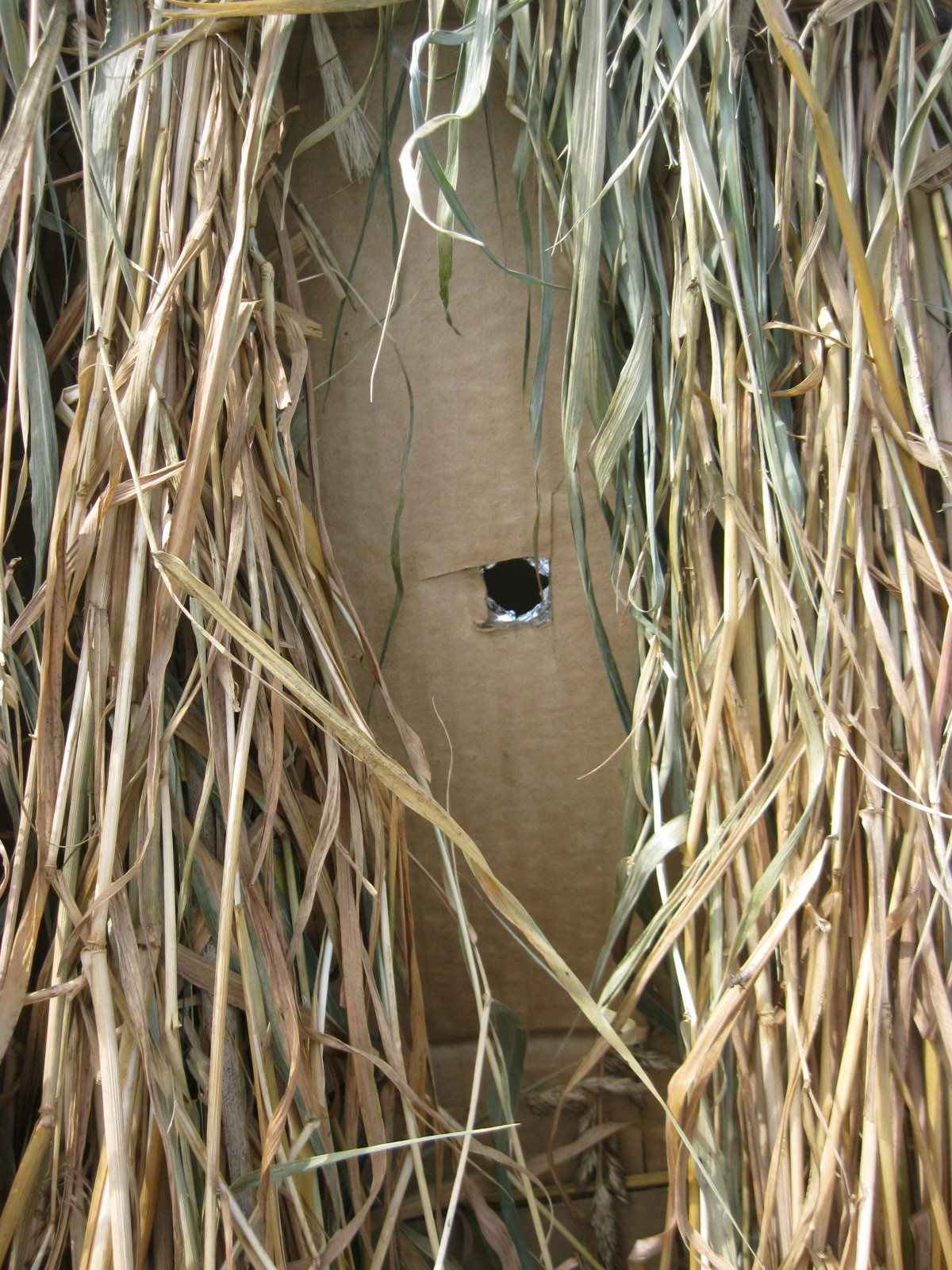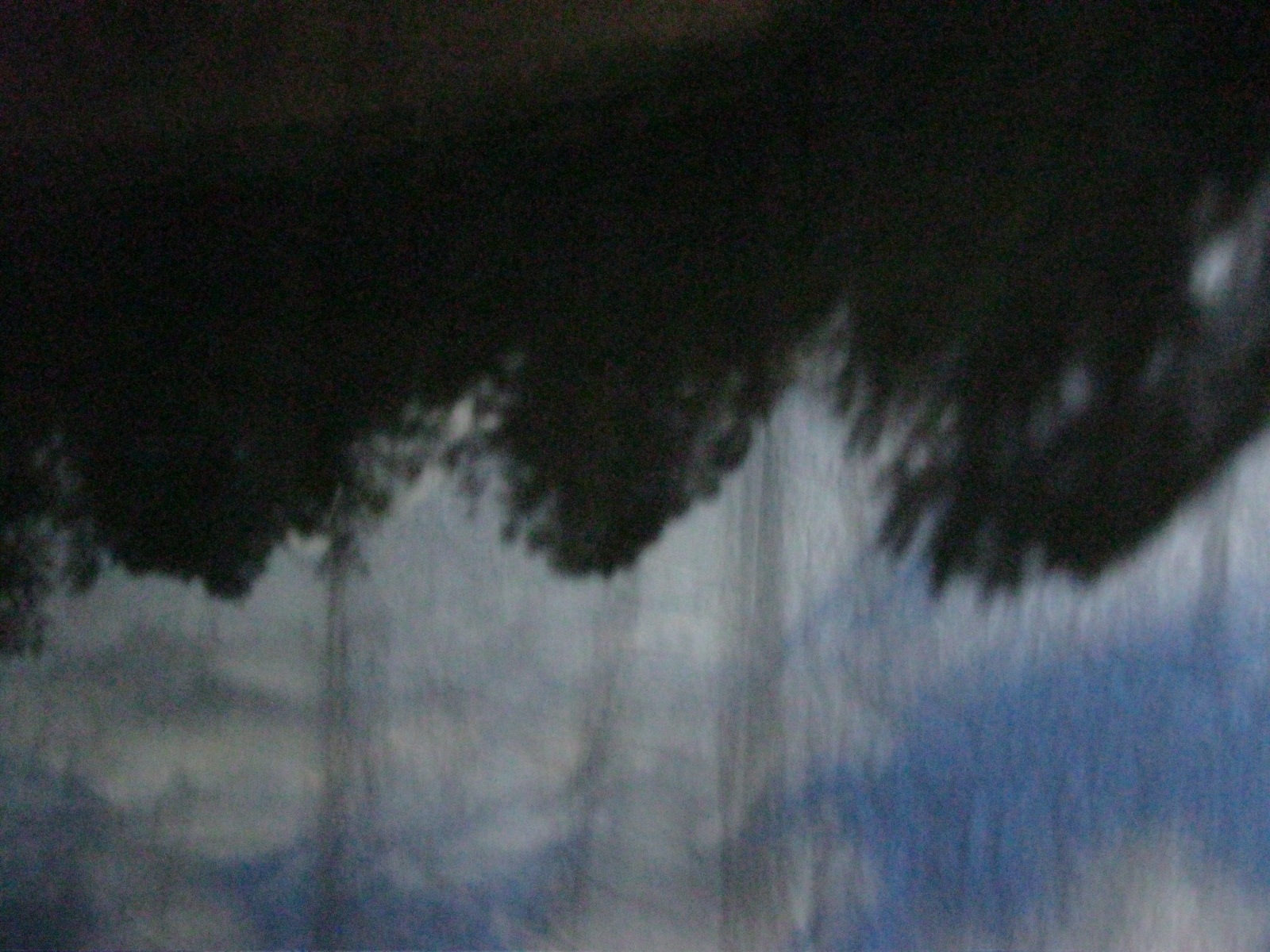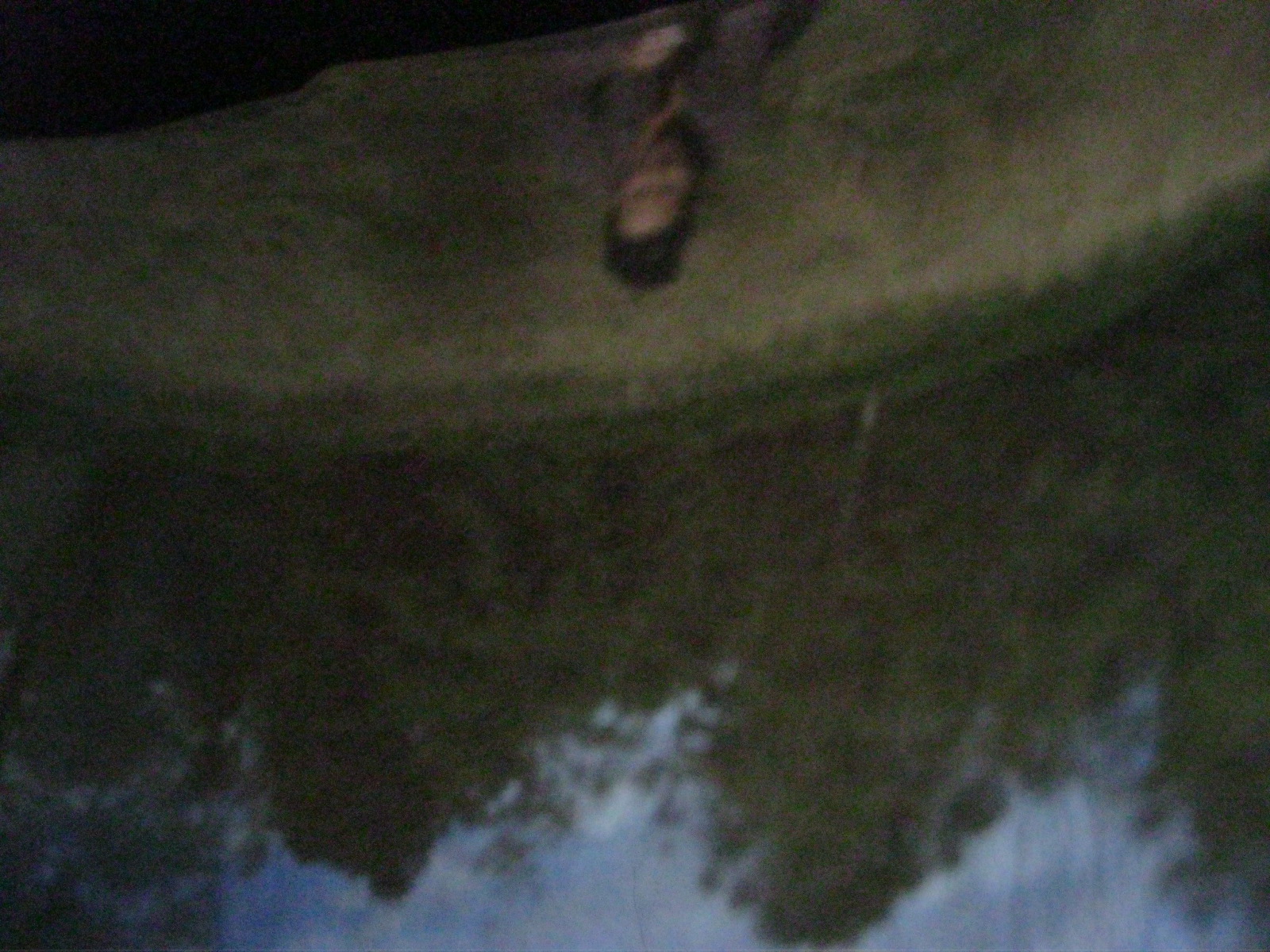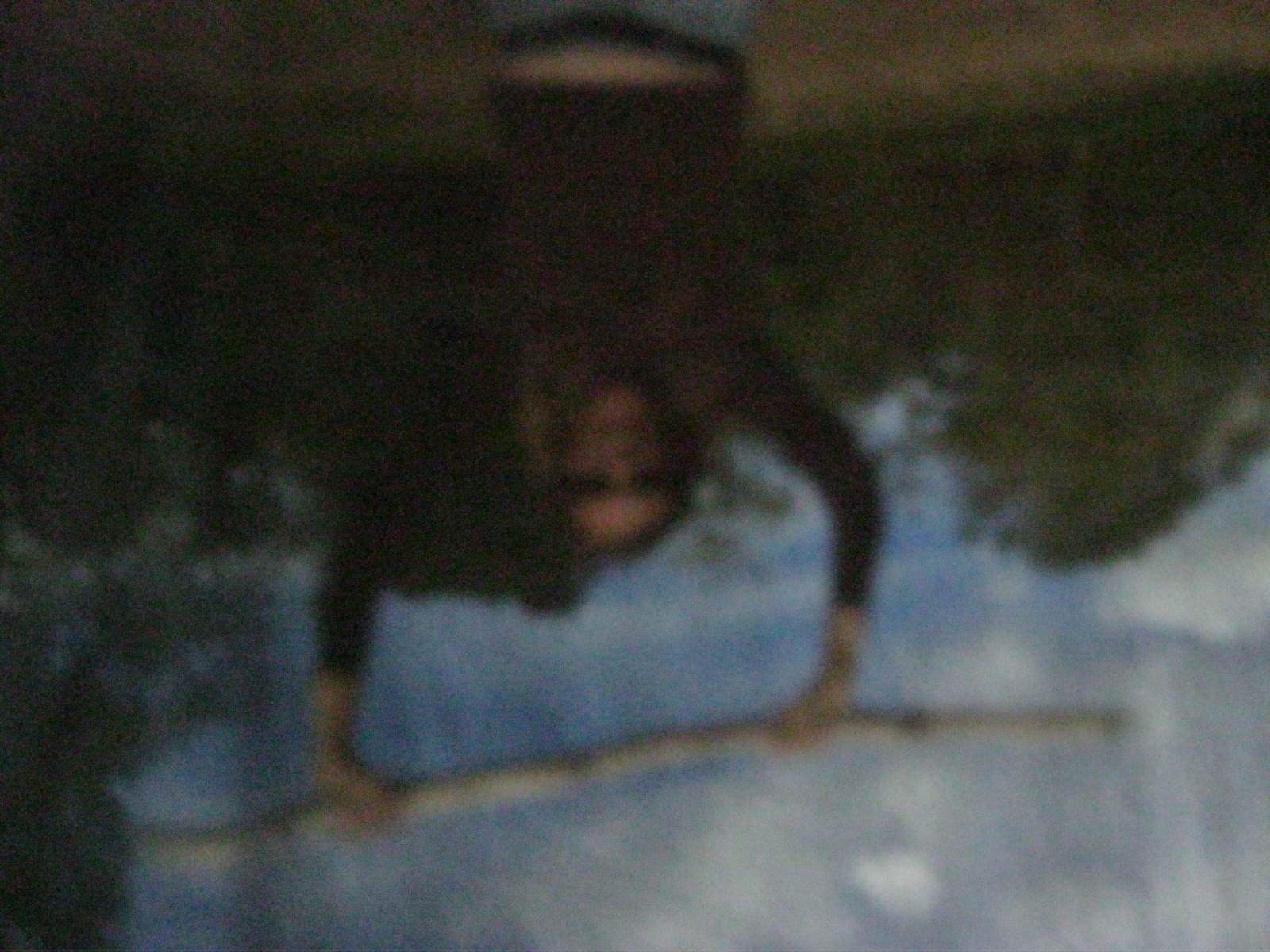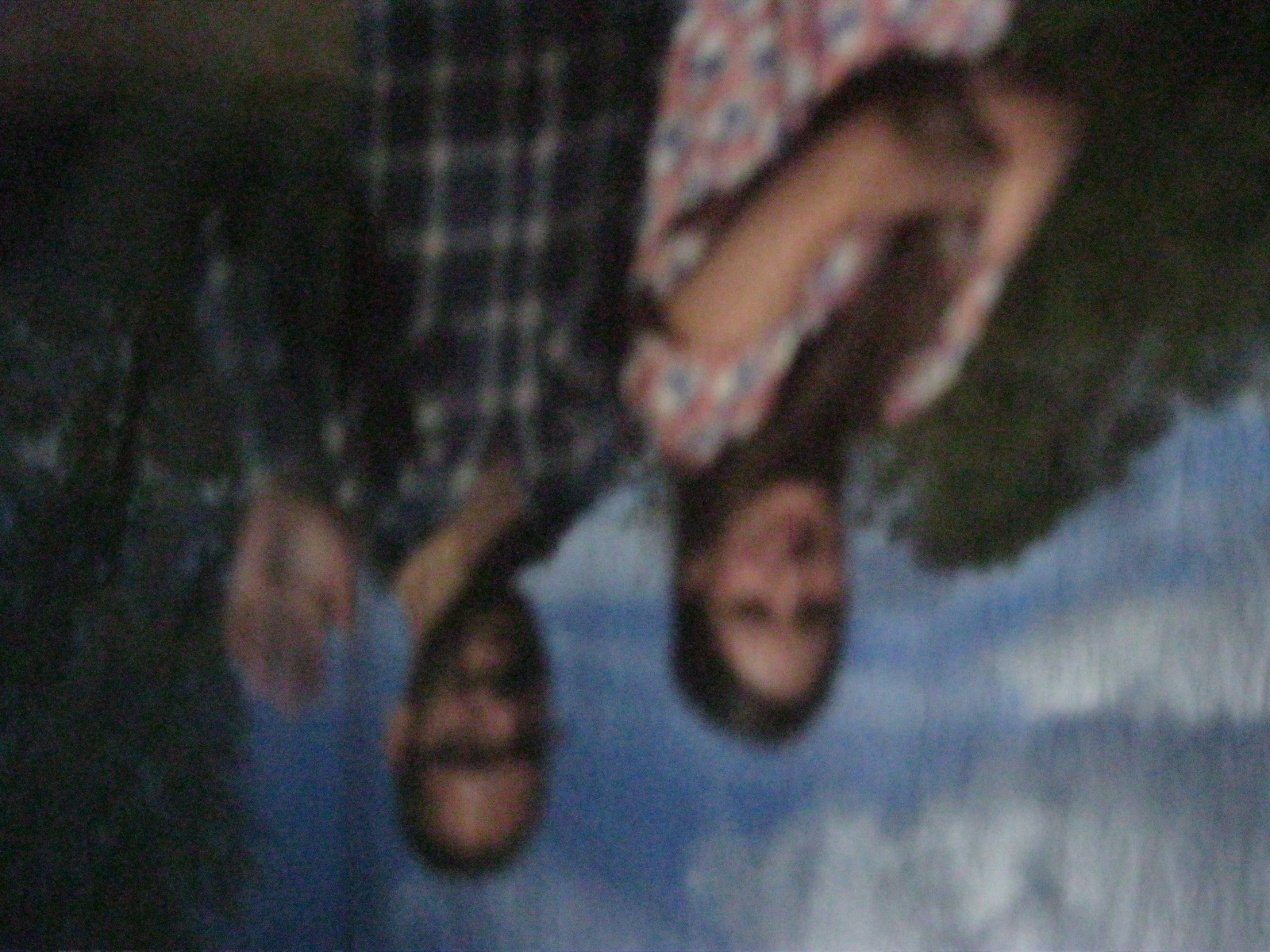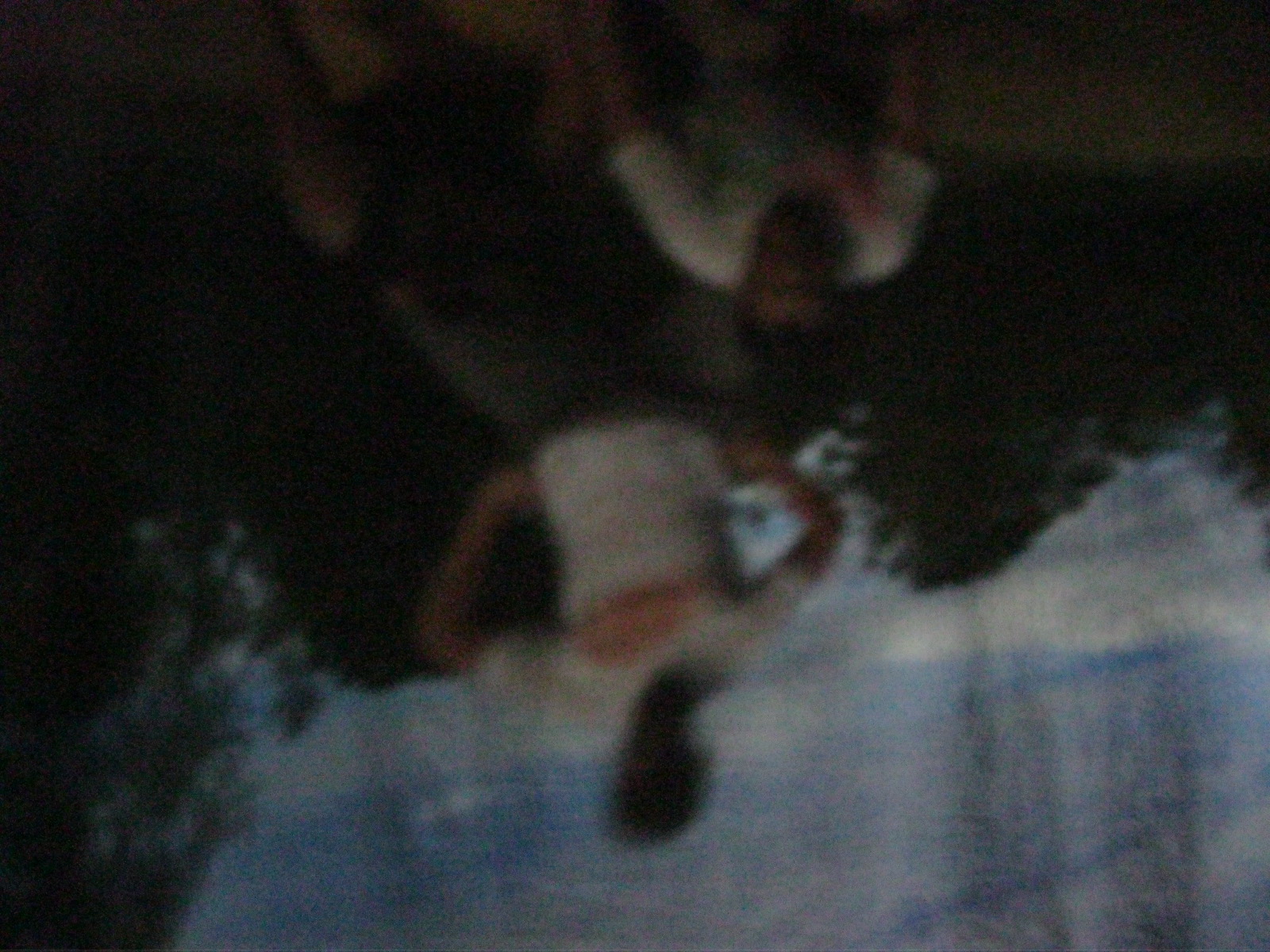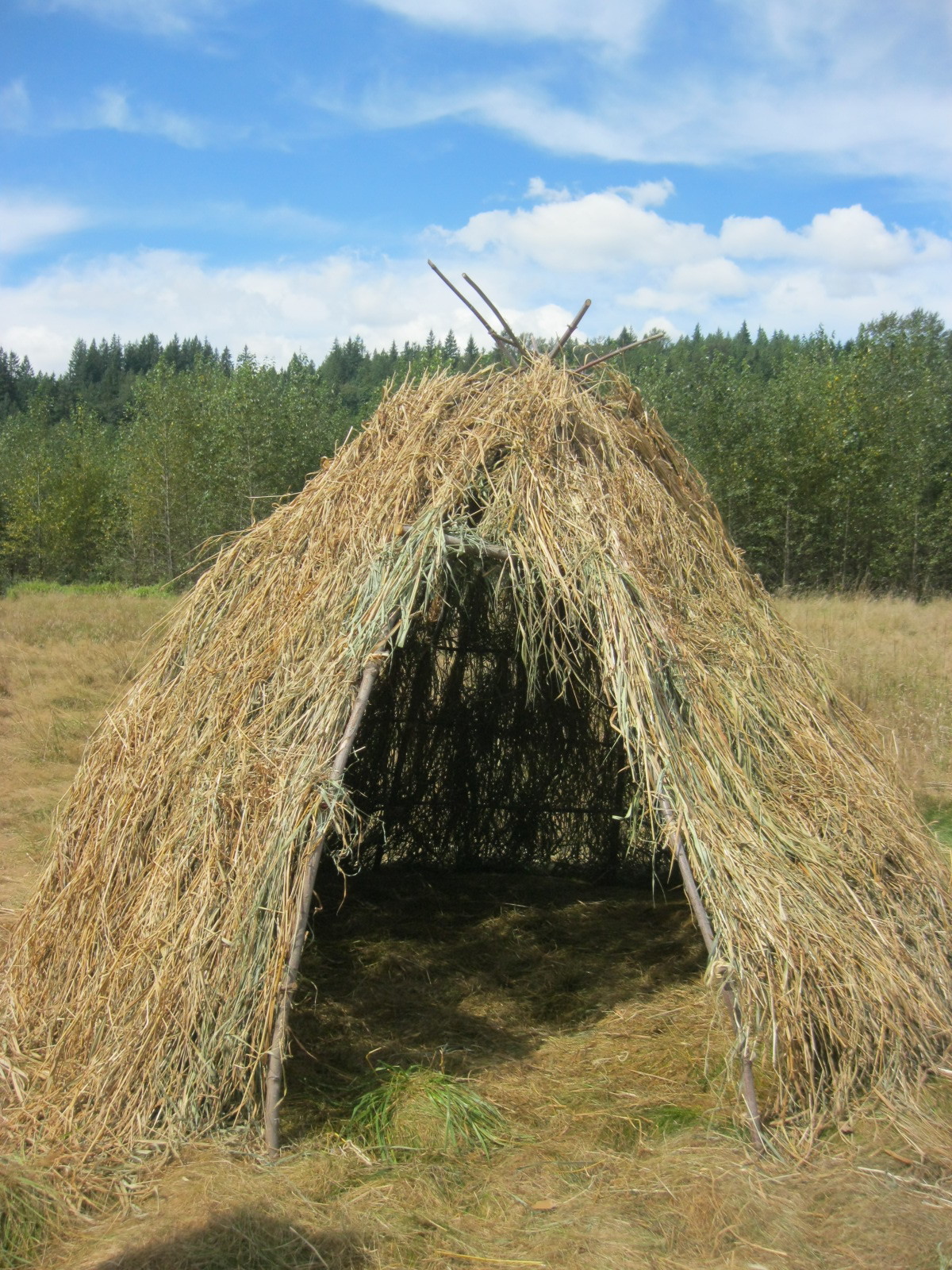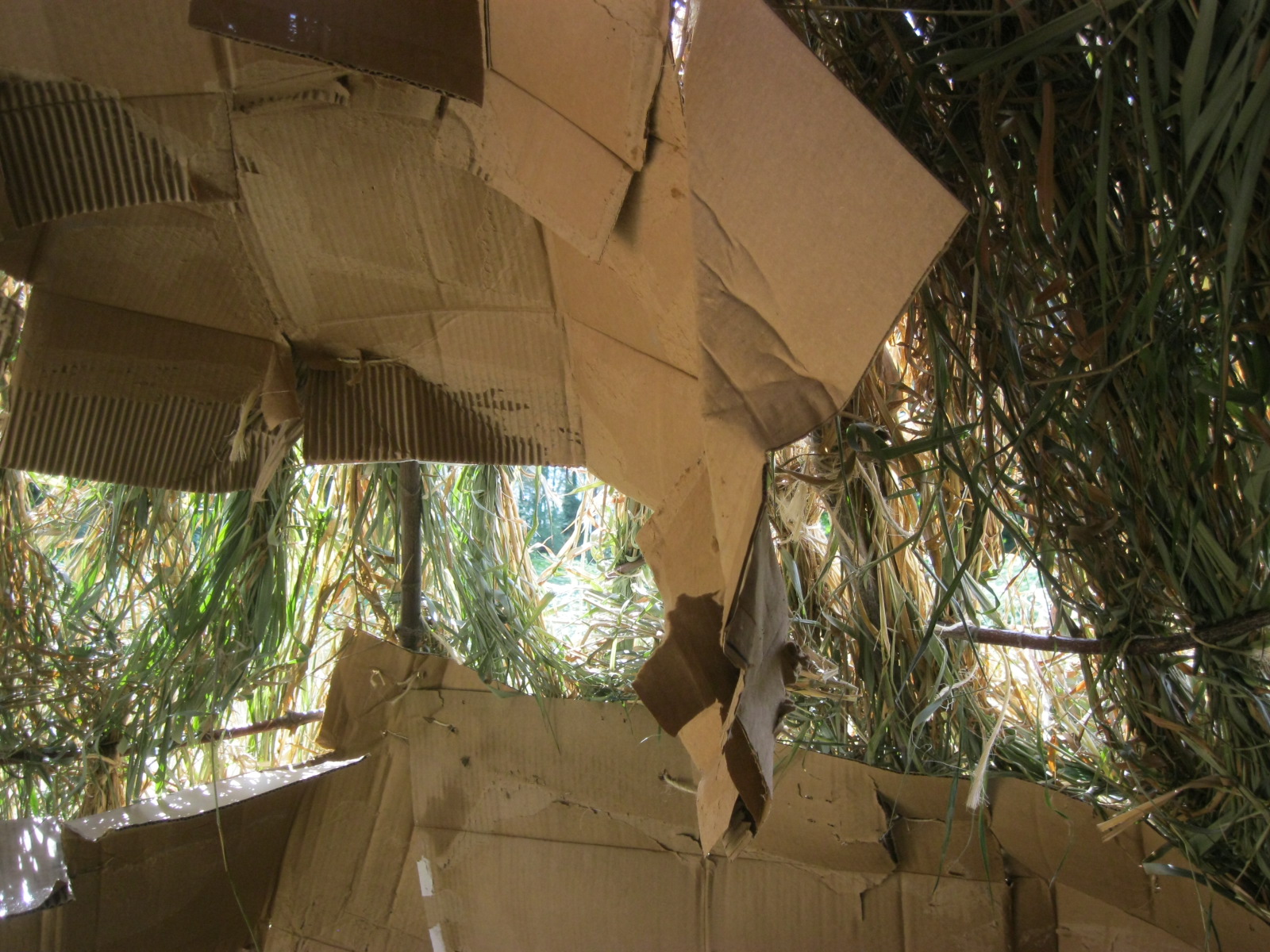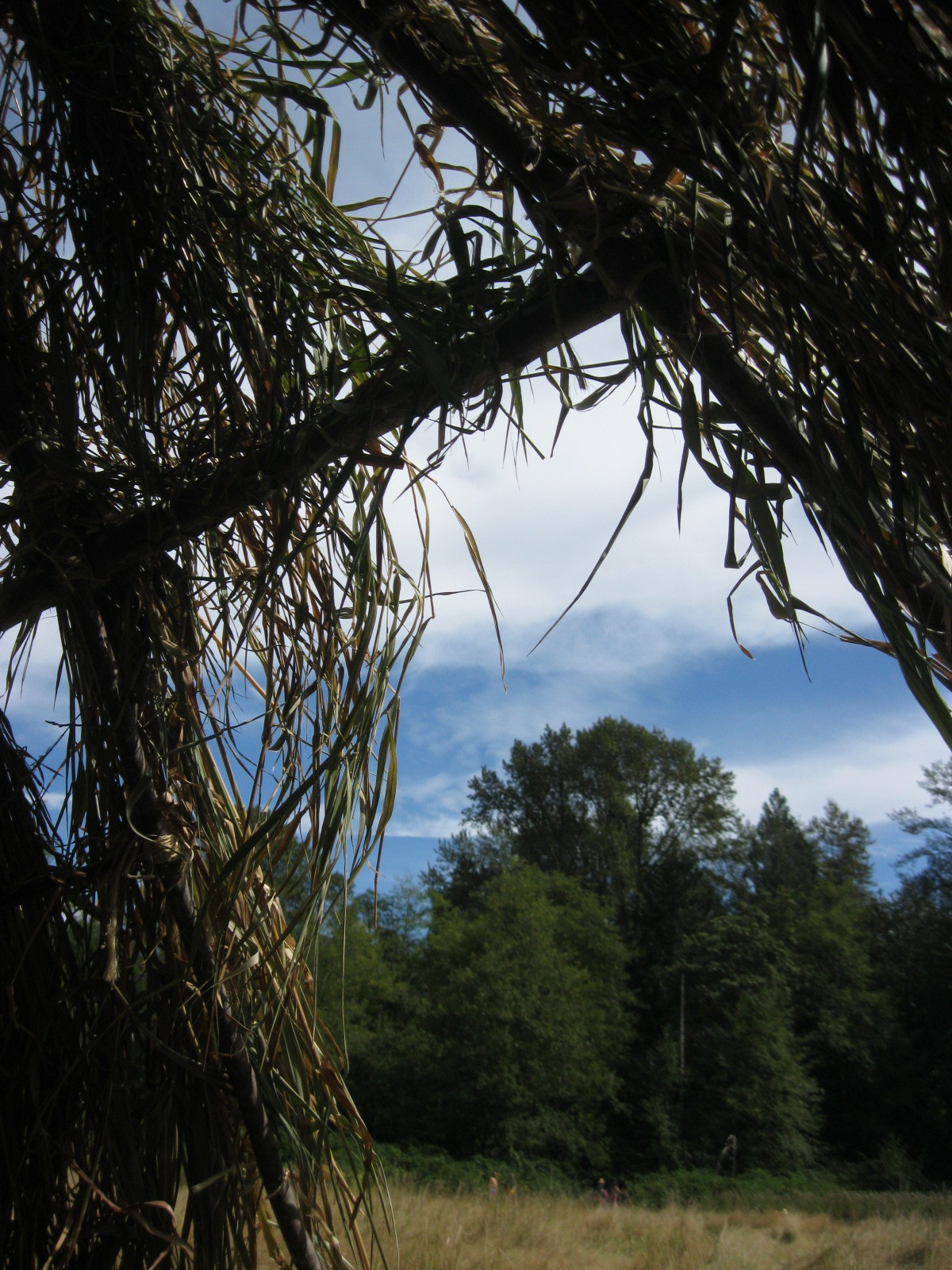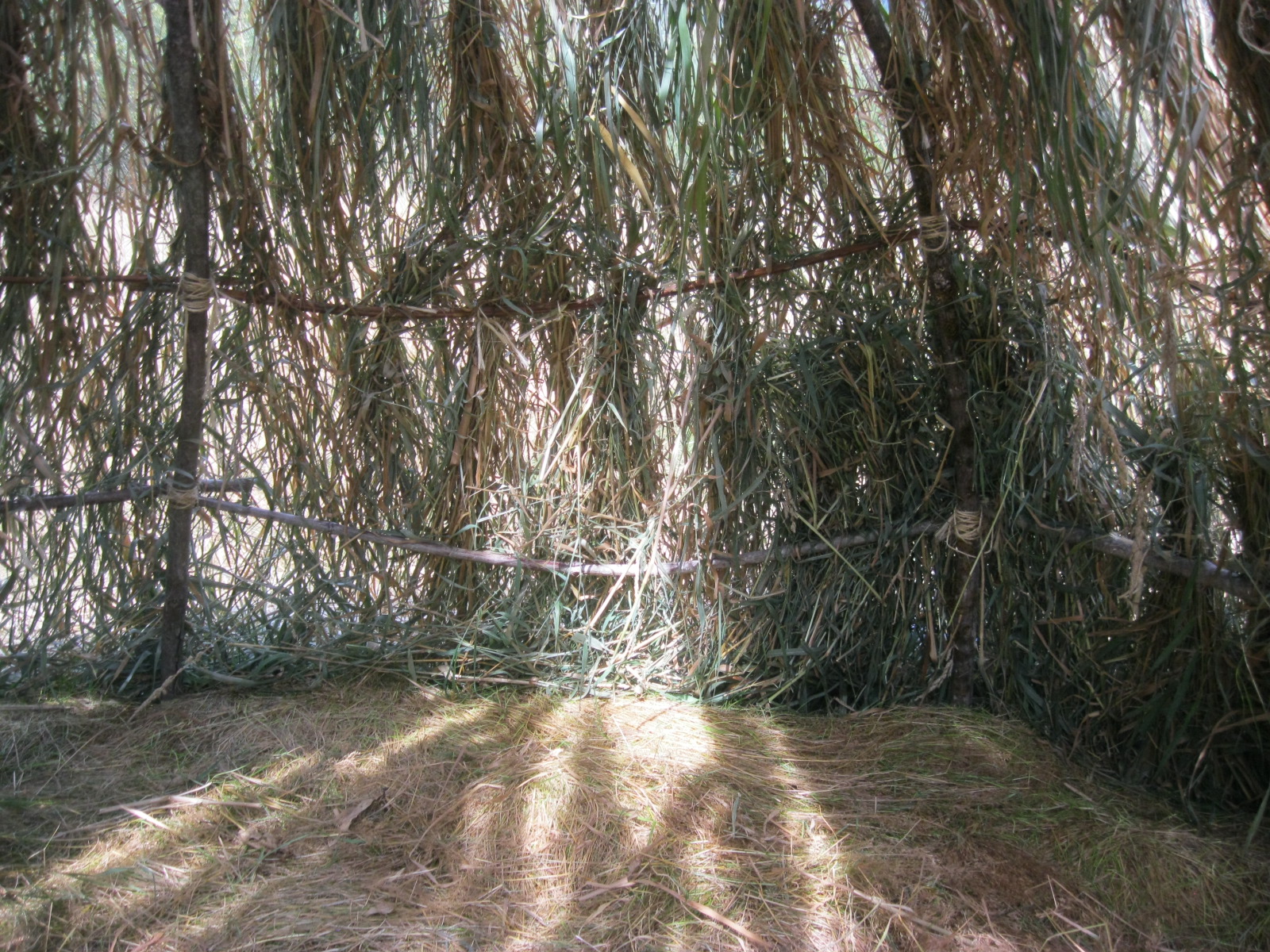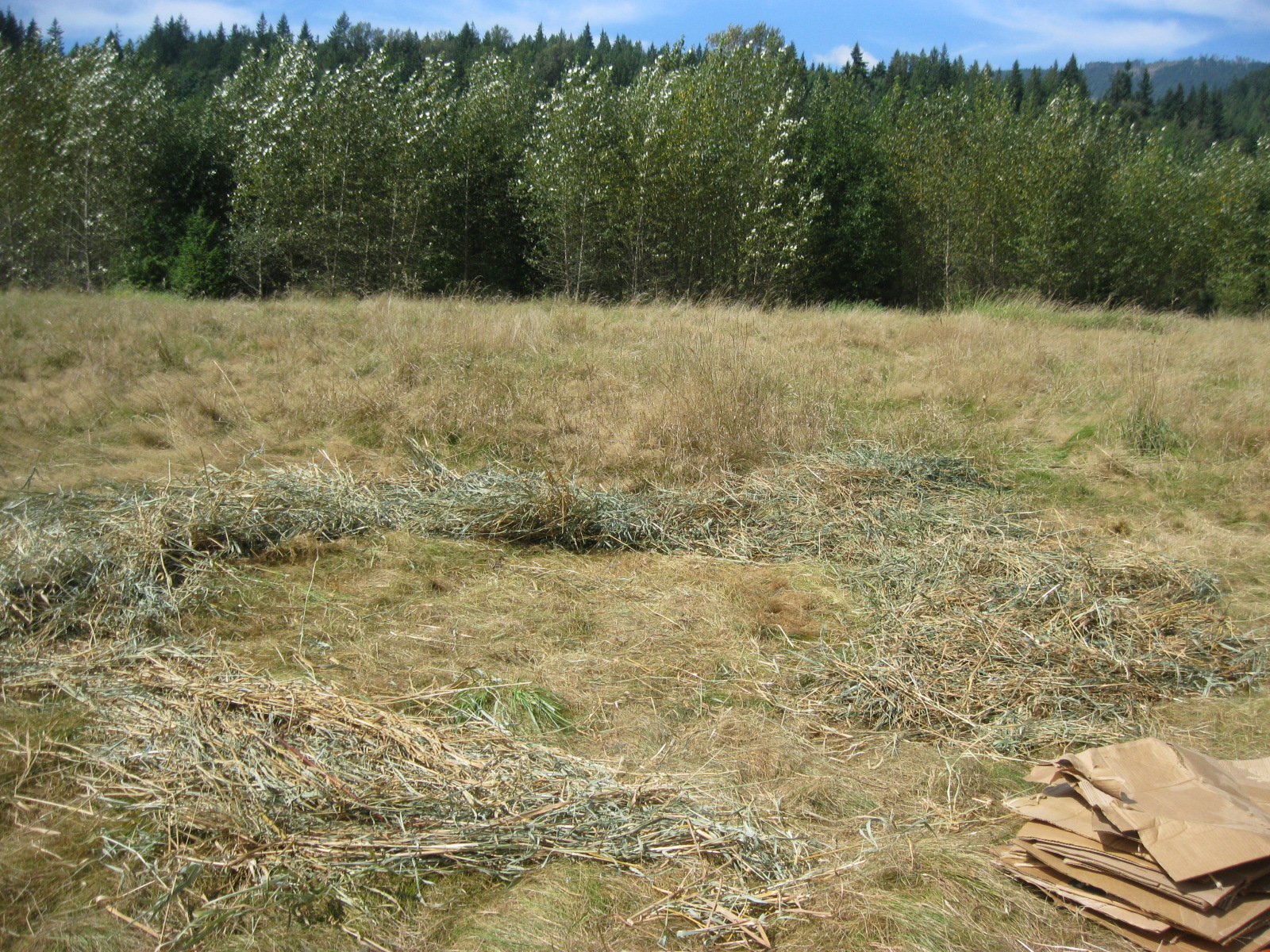These two site specific, temporary installations were collaborative works for the Smoke Farm Lo-Fi Art Festival in Arlington, WA. The first, Siren, 2009, was a collaboration with Kim Doyel, Caryn Badgett, and Lark Preyapongpisan. We collected grass from the fields at Smoke Farm and made paper that was then dyed with berry juice and sewn together in long, hanging panels. The panels were suspended over the Stillaguamish River, free to float along the line and interact with the wind.
The second, Camera Obscura (or as we lovingly called it- Cameraflage), 2013, was a collaboration with Kim Doyel. We built a 10 foot diameter grass hut camera obscura out of saplings, cardboard, and grass. The shelter rose from the landscape, looking as if it always belonged there. A camera obscura is a light tight room or box with a pinhole to let in light. The light travels in a straight line until it hits a surface (in our case, a white curtain) and illuminates it. The image you see in a camera obscura is upside down unless righted with mirrors. Our eyes take in light this way; our brain flips the image. The size of the hole controls brightness and focus. We sacrificed sharpness for a brighter image in this case. The beauty of this piece lay in the level of interaction between people outside the structure and those inside watching on the screen. Impromptu performances and experimentation with body movement sprung up to entertain an invisible audience. The viewers inside had an unexpected lesson in optics and a feeling as though they were watching old home movies (albeit, upside down cinema).
Below are some still photos that you can click on to enlarge. A slideshow of the making and experience of the camera obscura follows below. The upside down images are what you would have seen had you been inside.
